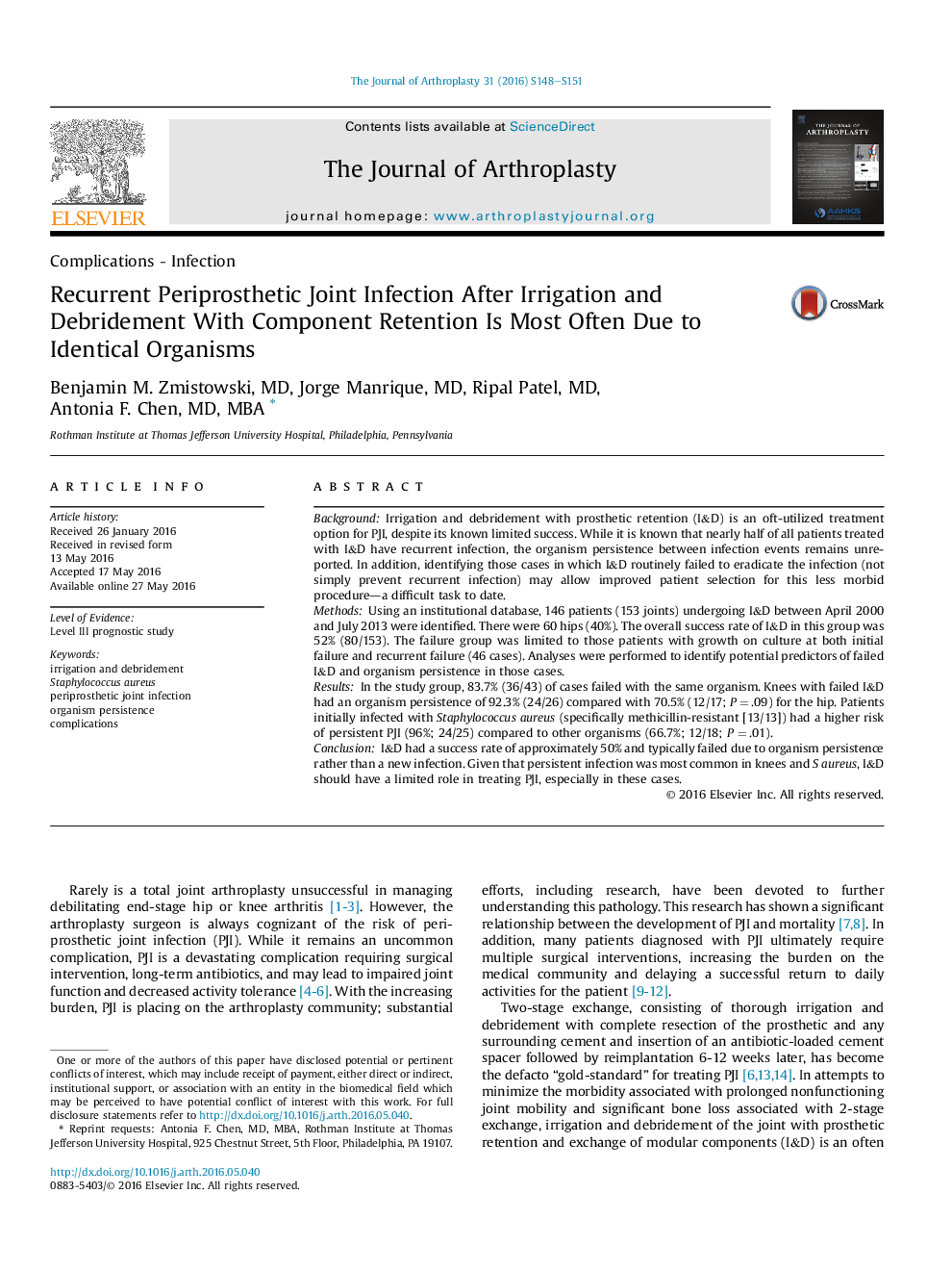| Article ID | Journal | Published Year | Pages | File Type |
|---|---|---|---|---|
| 6208364 | The Journal of Arthroplasty | 2016 | 4 Pages |
BackgroundIrrigation and debridement with prosthetic retention (I&D) is an oft-utilized treatment option for PJI, despite its known limited success. While it is known that nearly half of all patients treated with I&D have recurrent infection, the organism persistence between infection events remains unreported. In addition, identifying those cases in which I&D routinely failed to eradicate the infection (not simply prevent recurrent infection) may allow improved patient selection for this less morbid procedure-a difficult task to date.MethodsUsing an institutional database, 146 patients (153 joints) undergoing I&D between April 2000 and July 2013 were identified. There were 60 hips (40%). The overall success rate of I&D in this group was 52% (80/153). The failure group was limited to those patients with growth on culture at both initial failure and recurrent failure (46 cases). Analyses were performed to identify potential predictors of failed I&D and organism persistence in those cases.ResultsIn the study group, 83.7% (36/43) of cases failed with the same organism. Knees with failed I&D had an organism persistence of 92.3% (24/26) compared with 70.5% (12/17; PÂ = .09) for the hip. Patients initially infected with Staphylococcus aureus (specifically methicillin-resistant [13/13]) had a higher risk of persistent PJI (96%; 24/25) compared to other organisms (66.7%; 12/18; PÂ = .01).ConclusionI&D had a success rate of approximately 50% and typically failed due to organism persistence rather than a new infection. Given that persistent infection was most common in knees and S aureus, I&D should have a limited role in treating PJI, especially in these cases.
